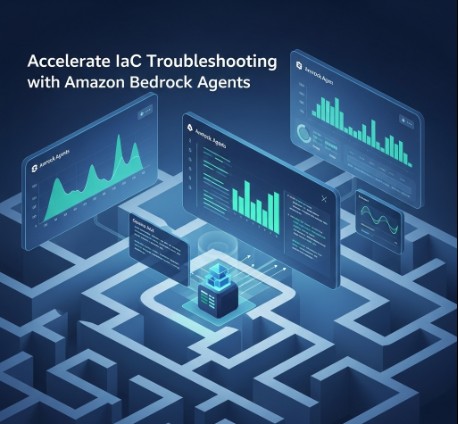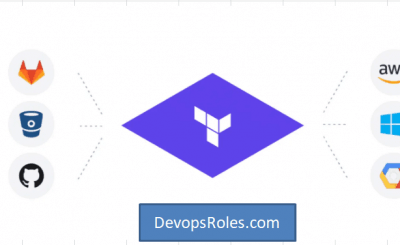Infrastructure as Code (IaC) has revolutionized infrastructure management, enabling automation and repeatability. However, when things go wrong, troubleshooting IaC can quickly become a complex and time-consuming process. Debugging issues within automated deployments, tracing the root cause of failures, and understanding the state of your infrastructure can be a significant challenge. This article will explore how Amazon Bedrock Agents can significantly accelerate your troubleshooting IaC workflows, reducing downtime and improving overall efficiency.
Table of Contents
Understanding the Challenges of IaC Troubleshooting
Traditional methods of troubleshooting IaC often involve manual inspection of logs, configuration files, and infrastructure states. This process is often error-prone, time-consuming, and requires deep expertise. The complexity increases exponentially with larger, more intricate infrastructures managed by IaC. Common challenges include:
- Identifying the root cause: Pinpointing the exact source of a failure in a complex IaC deployment can be difficult. A single faulty configuration can trigger a cascade of errors, making it challenging to isolate the original problem.
- Debugging across multiple services: Modern IaC often involves numerous interconnected services (compute, networking, storage, databases). Troubleshooting requires understanding the interactions between these services and their potential points of failure.
- State management complexity: Tracking the state of your infrastructure and understanding how changes propagate through the system is crucial for effective debugging. Without a clear picture of the current state, resolving issues becomes considerably harder.
- Lack of centralized logging and monitoring: Without a unified view of logs and metrics across all your infrastructure components, troubleshooting IaC becomes a tedious task of navigating disparate systems.
Amazon Bedrock Agents for Accelerated IaC Troubleshooting
Amazon Bedrock, a fully managed service for generative AI, offers powerful Large Language Models (LLMs) that can be leveraged to streamline various aspects of software development and operations. By using Bedrock Agents, you can significantly improve your troubleshooting IaC capabilities. Bedrock Agents allow you to interact with your infrastructure using natural language prompts, greatly simplifying the debugging process.
How Bedrock Agents Enhance IaC Troubleshooting
Bedrock Agents provide several key advantages for troubleshooting IaC:
- Natural Language Interaction: Instead of navigating complex command-line interfaces or APIs, you can describe the problem in plain English. For example: “My EC2 instances are not starting. What could be wrong?”
- Automated Root Cause Analysis: Bedrock Agents can analyze logs, configuration files, and infrastructure states to identify the likely root causes of issues. This significantly reduces the time spent manually investigating potential problems.
- Contextual Awareness: By integrating with your existing infrastructure monitoring and logging systems, Bedrock Agents maintain contextual awareness. This allows them to provide more relevant and accurate diagnoses.
- Automated Remediation Suggestions: In some cases, Bedrock Agents can even suggest automated remediation steps, such as restarting failed services or applying configuration changes.
- Improved Collaboration: Bedrock Agents can facilitate collaboration among teams by providing a shared understanding of the problem and potential solutions.
Practical Example: Troubleshooting a Failed Deployment
Imagine a scenario where a Terraform deployment fails. Using a traditional approach, you might need to manually examine Terraform logs, CloudWatch logs, and possibly the infrastructure itself to understand the error. With a Bedrock Agent, you could simply ask:
"My Terraform deployment failed. Analyze the logs and suggest potential causes and solutions."
The agent would then access the relevant logs and configuration files, analyzing the error messages and potentially identifying the problematic resource or configuration setting. It might then suggest solutions such as:
- Correcting a typo in a resource definition.
- Checking for resource limits.
- Verifying network connectivity.
Advanced Use Cases of Bedrock Agents in IaC Troubleshooting
Beyond basic troubleshooting, Bedrock Agents can be utilized for more advanced scenarios, such as:
- Predictive maintenance: By analyzing historical data and identifying patterns, Bedrock Agents can predict potential infrastructure issues before they cause outages.
- Security analysis: Agents can scan IaC code for potential security vulnerabilities and suggest remediation steps.
- Performance optimization: By analyzing resource utilization patterns, Bedrock Agents can help optimize infrastructure performance and reduce costs.
Troubleshooting IaC with Bedrock Agents: A Step-by-Step Guide
While the exact implementation will depend on your specific infrastructure and chosen tools, here’s a general outline for integrating Bedrock Agents into your troubleshooting IaC workflow:
- Integrate with Logging and Monitoring: Ensure your IaC environment is properly instrumented with comprehensive logging and monitoring capabilities (e.g., CloudWatch, Prometheus).
- Set up a Bedrock Agent: Configure a Bedrock Agent with access to your infrastructure and logging data. This might involve setting up appropriate IAM roles and permissions.
- Formulate Clear Prompts: Craft precise and informative prompts for the agent, providing as much context as possible. The more detail you provide, the more accurate the response will be.
- Analyze Agent Response: Carefully review the agent’s response, paying attention to potential root causes and remediation suggestions.
- Validate Solutions: Before implementing any automated remediation steps, carefully validate the suggested solutions to avoid unintended consequences.
Frequently Asked Questions
Q1: What are the limitations of using Bedrock Agents for IaC troubleshooting?
While Bedrock Agents offer significant advantages, it’s important to remember that they are not a silver bullet. They rely on the quality of the data they are provided and may not always be able to identify subtle or obscure problems. Human expertise is still crucial for complex scenarios.
Q2: How secure is using Bedrock Agents with sensitive infrastructure data?
Security is paramount. You must configure appropriate IAM roles and permissions to limit the agent’s access to only the necessary data. Follow best practices for securing your cloud environment and regularly review the agent’s access controls.
Q3: What are the costs associated with using Bedrock Agents?
The cost depends on the usage of the underlying LLMs and the amount of data processed. Refer to the Amazon Bedrock pricing page for detailed information. https://aws.amazon.com/bedrock/pricing/
Q4: Can Bedrock Agents be used with any IaC tool?
While the specific integration might vary, Bedrock Agents can generally be adapted to work with various IaC tools such as Terraform, CloudFormation, and Pulumi, as long as you provide the agent with access to the relevant logs, configurations, and infrastructure state data.

Conclusion
Amazon Bedrock Agents offer a powerful approach to accelerating troubleshooting IaC. By leveraging the capabilities of generative AI, DevOps teams can significantly reduce downtime and improve operational efficiency. Remember that while Bedrock Agents streamline the process, human expertise remains essential for complex situations and validating proposed solutions. Effective utilization of Bedrock Agents can significantly enhance your overall troubleshooting IaC strategy, leading to a more reliable and efficient infrastructure. AWS DevOps Blog Terraform. Thank you for reading the DevopsRoles page!

